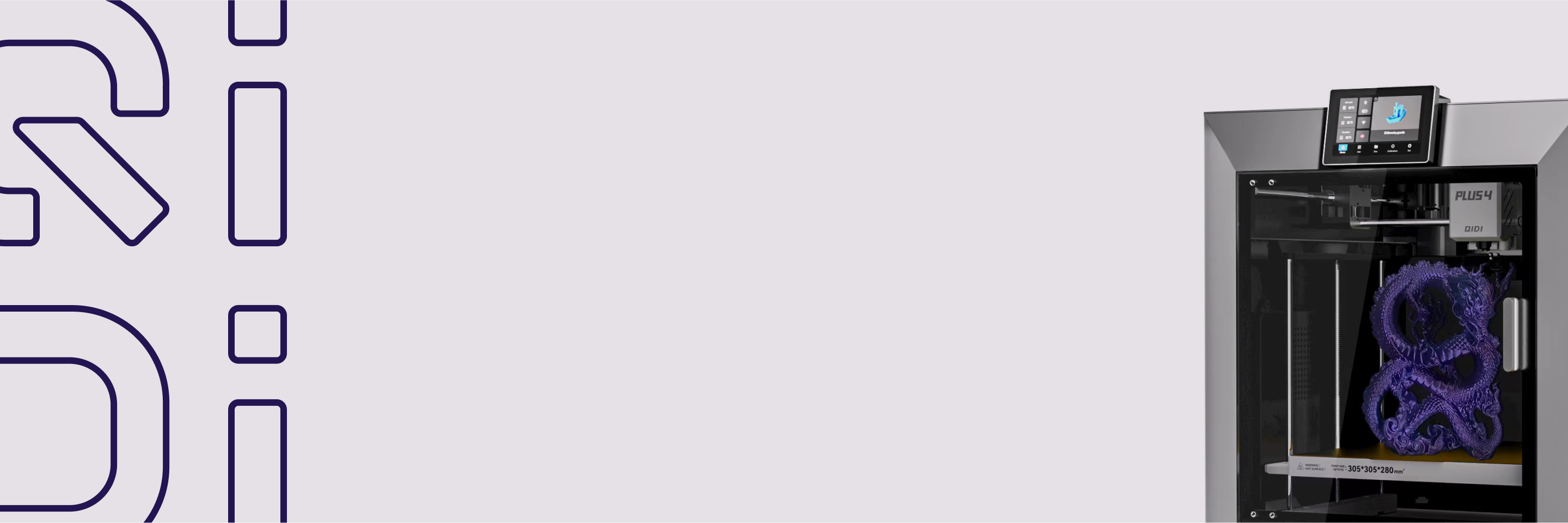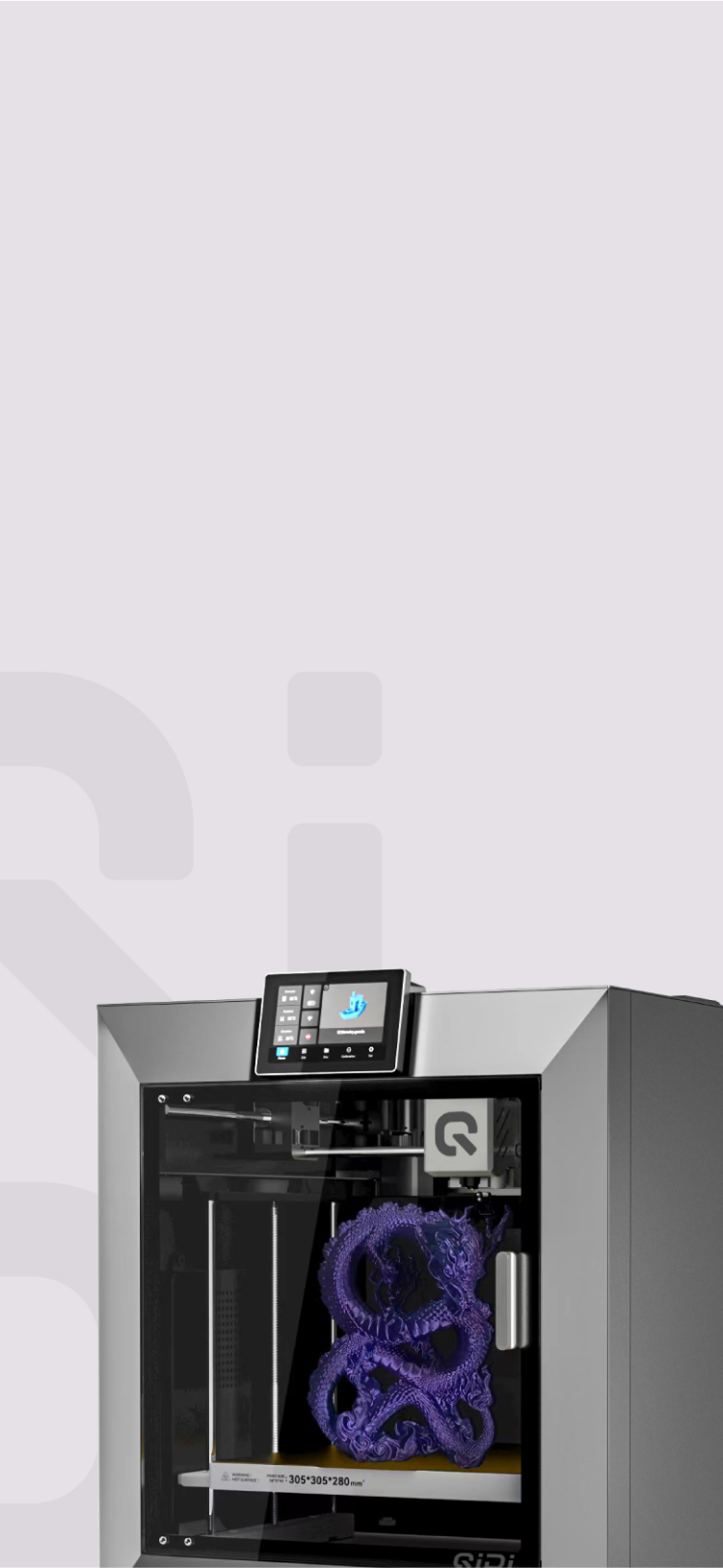كم تكلفة الطابعة ثلاثية الأبعاد ?


تتمتع الطباعة ثلاثية الأبعاد بجاذبية كبيرة لدى رواد الأعمال والمصممين والهواة ومعلمي العلوم والتكنولوجيا والهندسة والرياضيات على حد سواء. مع استمرار تقدم قدرات الطابعات ثلاثية الأبعاد المكتبية بأسعار معقولة، يستكشف المزيد من الأشخاص تبني التصنيع الإضافي. مع قدرة الآلات الآن على الطباعة على أنواع مختلفة من البلاستيك والمعادن والسيراميك وحتى الطعام، تبدو الاحتمالات لا حصر لها. ولكن مع توفر العديد من النماذج والتقنيات الآن بأسعار مختلفة تمامًا، ينشأ ارتباك حول الميزانية الخاصة بطابعتك ثلاثية الأبعاد الأولى. يوضح هذا الدليل النفقات والميزات للمساعدة في اختيار الطابعة المناسبة بناءً على الاحتياجات الفردية والميزانية.
ورقة نظرة سريعة:
| نوع الطابعة | يكلف | حجم البناء | سمات |
|---|---|---|---|
| دورة FDM للمبتدئين | <300 دولار | صغير | نماذج أساسية، مجموعات DIY |
| FDM متوسطة المدى | 400 دولار - 1000 دولار | واسطة | تحسين الموثوقية ودعم المجتمع |
| FDM/SLA عالية الجودة | 1000 دولار - 4000 دولار | كبير | مواد عالية الجودة ومتقدمة |
| تجاري | من 3000 دولار | عامل | درجة الإنتاج، غرف مغلقة |
| SLS/DMLS الصناعية | من 50000 دولار | كبير | مواد صناعية عالية الدقة |
تقنيات الطباعة ثلاثية الأبعاد: FDM مقابل SLA مقابل SLS
توجد العديد من تقنيات التصنيع الإضافي، ولكل منها مقايضاتها الخاصة فيما يتعلق بالتسعير وجودة الأجزاء والتطبيقات المناسبة.
مستوى الدخول: الطباعة بتقنية FDM
نمذجة الترسيب المندمج (FDM) يقوم بإخراج خيوط بلاستيكية حرارية ساخنة في طبقات لبناء المطبوعات. يستخدم معظم الطابعين الهواة هذه التكنولوجيا الآمنة والمتاحة وبأسعار معقولة مع أوسع خيارات المواد مثل ABS، وPLA، وTPU المرن. طابعات FDM ثلاثية الأبعاد على الرغم من أن دقتها وجودة تشطيب السطح محدودة أكثر.
بالنسبة لأولئك الذين بدأوا للتو أو يبحثون عن توصيات للطابعات ثلاثية الأبعاد المناسبة للمبتدئين، يمكنك تصفح مقالتنا المنسقة حول "ال أفضل ثلاثي الأبعاد الطابعة ل المبتدئين 2024"، مما سيساعدك على التنقل في السوق المتنوعة والعثور على طابعة تحقق التوازن بين البساطة والأداء والسعر.
المحترفون: طباعة SLA
الطباعة النمطية المجسمة (SLA) تصلب الراتينج السائل إلى بلاستيك مقوى باستخدام ليزر فوق بنفسجي. تعمل اللمسة النهائية الناعمة والتفاصيل الدقيقة من طابعات SLA بشكل أفضل لتصنيع النماذج الأولية أو أنماط صب المجوهرات أو الأجهزة السنية. ومع ذلك، تظل طابعات SLA والراتنجات الحساسة للضوء أكثر تكلفة من FDM الأساسية.
الصناعة: طباعة SLS
التلبيد الانتقائي بالليزر (SLS) تستخدم هذه التقنية ليزرًا عالي الطاقة لصهر النايلون المسحوق والسيراميك والمعادن. وتتيح عملية استخدام مسحوق التلبيد إنشاء أشكال هندسية داخلية معقدة دون أي هياكل داعمة. ورغم دقتها الشديدة، فإن الطابعات الصناعية التي تعمل بتقنية التلبيد بالليزر المباشر للمعادن تبدأ من حوالي 50 ألف دولار. وتسمح أنظمة التلبيد بالليزر المباشر للمعادن المماثلة بإنتاج أجزاء معدنية بكميات صغيرة بحيث تتطلب بسهولة مبالغ ضخمة.
توجد طرق إضافية للطباعة ثلاثية الأبعادمثل نفث المواد الذي يمكنه مزج الألوان في المطبوعات. سنركز هنا على أكثر التقنيات شيوعًا واقتصادية ومناسبة للشركات والمستهلكين.

العوامل الرئيسية المؤثرة على أسعار الطابعات ثلاثية الأبعاد
هناك العديد من الاعتبارات المهمة التي تتجاوز سعر التجزئة المقترح من الشركة المصنعة (MSRP) والتي تؤثر على التكاليف الإجمالية لامتلاك وتشغيل طابعة ثلاثية الأبعاد:
جودة الطباعة والتسامحات
تتميز الطابعات الصناعية بدقة تصل إلى 0.1 مم، في حين يبلغ متوسط دقة الطابعات الاستهلاكية حوالي 0.5 مم. وتحتاج النماذج الأولية إلى تحمُّلات أقل.
حجم البناء
تسمح أحجام الطباعة القصوى الأكبر بأجزاء أكبر، لكن تكلفة إطار الطابعة أعلى. تحقق الطابعات متوسطة المدى التوازن عند مساحة بناء تتراوح بين 6 و9 بوصات مكعبة.
تكاليف التشغيل والصيانة
يمكن للطابعات المبتدئة تخطي المعايرة والتعامل مع انحشار الخيوط بسهولة أكبر مع تقليل الفوضى والمخاطر. ومع ذلك، تم تصميم الطابعات الصناعية للإنتاج على مدار الساعة على الرغم من ارتفاع التكاليف العامة.
عناصر التحكم والبرمجيات
تتيح شاشات اللمس والتقطيع المدمج استخدامًا مستقلاً دون الحاجة إلى جهاز كمبيوتر شخصي. ولكن الاشتراكات في البرامج تتراكم للحصول على مجموعات برامج تجارية تدعم الإعدادات المتقدمة.
الضمانات والدعم الفني
تقدم الطابعات التي تحمل علامات تجارية معروفة ضمانات لمدة عام ودعمًا معروفًا بعد البيع لتبرير التكلفة مقارنة بالاستيراد من علامات تجارية غير معروفة. ضع في اعتبارك التكاليف طويلة الأجل التي تتجاوز مجرد الأسعار المعلنة عند الاستثمار.

نطاق الأسعار للطابعات ثلاثية الأبعاد للاستخدام المنزلي
مع تكاليف تتراوح من 100 دولار فقط إلى أكثر من 100 ألف دولار، فإن تحديد توقعات واقعية تتناسب مع احتياجات التطبيق يمنع الإفراط في الإنفاق على وظائف قد لا تستخدمها إلا نادرًا. فيما يلي نظرة عامة على قطاعات الأسعار في سوق الطابعات ثلاثية الأبعاد:
الطابعات المكتبية للمبتدئين
البيع بالتجزئة بأقل من 300 دولارتعتبر هذه الآلات ذات الأسعار المعقولة للغاية أجهزة بداية جيدة. تناسب أحجام البناء الصغيرة التي تتراوح بين 3 إلى 5 بوصات من المكعبات طباعة الحلي أو مشاريع الهوايات أو المهام المدرسية. توقع معايرة يدوية وخيارات مواد محدودة ولكن مخاطر منخفضة للغاية لمحاولة استكشاف الطباعة ثلاثية الأبعاد. بالنسبة لأولئك الذين يفكرون في هذه الخيارات الصديقة للميزانية، فإن الأمر يستحق استكشاف السؤال: هل يجب أن أشتري طابعة ثلاثية الأبعاد رخيصة؟؟
الطابعات الاستهلاكية المتوسطة
في نطاق 400 إلى 1000 دولار توجد آلات متعددة الاستخدامات. تتعامل أحجام البناء المتوسطة من 5 إلى 9 بوصات مكعبة مع المطبوعات المفيدة. توقع أداءً موثوقًا به مقابل السعر مع دعم مجتمعي ممتاز. يقوم العديد من المستهلكين المحترفين بتخصيص طابعاتهم وترقيتها أيضًا.
الطابعات الاستهلاكية الراقية
الانتقال من 1000 دولار إلى 4000 دولار يعني شراء أجهزة أكبر للمستهلكين المحترفين تتميز هذه الطابعات بميزة البثق المزدوج، والإطارات المعدنية القوية، والمرونة في التعامل مع المواد من PLA إلى المواد المرنة. كما توفر بعضها رؤوس طباعة قابلة للتبديل لاستخدام وحدات طباعة راتنج SLA أيضًا. وتبرر الأسعار المرتفعة الموثوقية العالية في التوصيل والتشغيل.
الطابعات ثلاثية الأبعاد التجارية وتكاليفها
بالإضافة إلى قدرات FDM الأساسية، توفر الطابعات ثلاثية الأبعاد التجارية المخصصة للاستخدام اليومي المستمر وظائف متخصصة بميزانيات أعلى.
الطابعات التجارية
حول شريحة 3000 دولار+ تبدأ الطابعات المصممة خصيصًا للشركات الصغيرة والتطبيقات الصناعية من هذا الطراز. توقع وجود حجرات مغلقة لتوزيع حراري مستقر، وحزم برامج محسّنة، ودورات طويلة من الطباعة المستمرة دون مراقبة. تتحمل جودة التصنيع الاستخدام الإنتاجي اليومي مع عقود الخدمة أو الصيانة المتوفرة في الموقع.
أنظمة التصنيع الصناعي
على مستوى التصنيع المتقدم، تتراوح تكاليف الاستثمار في الطابعات ثلاثية الأبعاد التجارية بين 100 ألف إلى ملايين الدولارات.ولكنها تمكن تطبيقات الإنتاج الضخم مثل المنتجات النهائية المخصصة بكميات كبيرة، وأدوات المصانع، وإنتاج السلع ذات الهامش المرتفع من تحقيق عائد سريع على الاستثمار على نطاق واسع.إن نفقاتهم الضخمة لا تصبح منطقية من الناحية المالية إلا بعد تبرير إمكانات الإيرادات المتكررة الكبيرة من مجالات التصنيع المتخصصة.
التكاليف الإضافية التي يجب مراعاتها
ما وراء أسعار الطابعات ثلاثية الأبعاد الفعليةإن إكمال نظام وظيفي كامل يتطلب تكاليف إضافية أيضًا:
برنامج Slicer مع التحديثات
بينما شرائح مفتوحة المصدر متاحة مجانًا، خيارات البرامج التجارية إضافة دعم لعناصر التحكم المتقدمة. يجب أيضًا مراعاة الحفاظ على التوافق مع تحديثات البرامج الثابتة عند وضع الميزانية للملكية على مر السنين.
أسطح أسرة الطباعة والمواد اللاصقة
طلاءات خاصة مثل أفلام جزيرة الأمير إدوارد (30-60 دولارًا) يساعد بشكل كبير على التصاق الطبقة الأولى لبعض المواد مثل PETG أو النايلون لتجنب تكاليف الطباعة الفاشلة في المنتصف. توقع استبدال المواد الاستهلاكية.
المواد الاستهلاكية من الخيوط والراتنج
مع أسعار المواد تتراوح من الميزانية PLA بسعر 20 دولارًا للكيلوغرام إلى خيوط الطباعة المتخصصة التي يزيد سعرها عن 65 دولارًا للكيلوغرام، مع الأخذ في الاعتبار تكاليف المواد الاستهلاكية التشغيلية. ومع ذلك، أصبحت الراتنجات المستخدمة في الطابعات ذات الطباعة أحادية الطبقة أرخص وأكثر توفرًا على نطاق واسع.

كيفية اختيار الطابعة ثلاثية الأبعاد المناسبة لاحتياجاتك
على الرغم من أن الاستثمار الأولي في الطابعة ثلاثية الأبعاد يمثل مجرد البداية، فإن اختيار السرعة المناسبة والميزانية المخصصة للآلة وتجنب الميزات الزائدة غير الضرورية يمنع إهدار الكثير من النفقات والإحباط:
- تقييم أحجام البناء مطلوبة لتطبيقاتك وأحجام أجزائك المتوقعة. المنصات المبالغ في تقديرها تشغل مساحة أكبر وتكلف أكثر.
- إعطاء الأولوية للسلامة والموثوقية إذا الطباعة حول الاطفال. الغرف المغلقة تساعد في هذا الأمر.
- إذا كنت تريد طباعة نماذج أولية بصرية ذات تفاصيل عالية جدًا، فإن راتنجات SLA توفر أفضل الجماليات.
- إن الطابعات المعدنية الصناعية فقط هي التي تكتسب معنى اقتصاديًا بعد أن يبرر حجم الإنتاج التكاليف.
يتطلب الحصول على أقصى قيمة تحديد التطبيقات الأساسية والمواصفات الواقعية المطلوبة بوضوح بدلاً من الشراء الاندفاعي للوحدة الأكبر حجمًا والأكثر تكلفة. دع التجربة الفعلية تشكل الأساس للترقيات أو الإضافات المستقبلية بعد تحديد الجوانب الضرورية مقابل القدرات الجيدة التي نادرًا ما يتم استخدامها.
نظرة مستقبلية على اتجاهات القدرة على تحمل التكاليف
على غرار كيفية تقدم أجهزة الكمبيوتر والهواتف المحمولة في وقت لاحق، الطابعات ثلاثية الأبعاد تتبع اتجاهات أسعار الإلكترونيات الاستفادة من المكونات المعيارية الموحدة المبنية في اقتصاديات الحجمكما عملت فلسفة مجتمع DIY RepRap على تحويل التصميمات مفتوحة المصدر إلى سلعة أساسية لصالح المستهلكين. ومع انتهاء صلاحية براءات الاختراع وتزايد المنافسة بين الشركات المصنعة، تنخفض الأسعار بشكل ثابت مما يسمح بالمزيد من الميزات المبتكرة حتى بتكاليف منخفضة.
يمكن للمشترين الأذكياء تحقيق أقصى استفادة من خلال تجنب نماذج الجيل الأول المتطورة والشراء بدلاً من ذلك الطابعات متوسطة المدى ذات القيمة المحسنة مع موثوقية مثبتة. مع طرح التحسينات التدريجية سنويًا، تنضم الطابعات الرائدة اليوم بتقنية FDM أو SLA في نهاية المطاف إلى مستويات الأسعار الأولية في وقت قصيرإن الانتظار حتى دورة إنتاج منتج واحد يسمح لك بالاستفادة من إمكانيات أكبر بكثير لاستثماراتك. ولكن لا تفرط في إنفاق ميزانياتك على أمل حدوث تقدم ثوري في المستقبل القريب.
العثور على الطابعة المناسبة!
للمبتدئين في مجال الطباعة ثلاثية الأبعادتجنب الإفراط في الاستثمار مقدمًا في الطابعات المتقدمة التي تتجاوز مستويات الخبرة ومتطلبات الأجزاء الفعلية. يتيح لك البدء بشكل متواضع اكتساب المهارات بأمان باستخدام آلات مبتدئة بأسعار معقولة ومدعومة جيدًا.مع ظهور الألفة والمشاريع الأكثر طموحًا بمرور الوقت، قم بالترقية تدريجيًا إلى الطابعات ثلاثية الأبعاد من الدرجة الأعلى إن توفير الإمكانات الإضافية الآن لتلبية الاحتياجات أمر بالغ الأهمية. ومع الصبر والدعم المناسب، فإن اكتشاف الطابعة ثلاثية الأبعاد المثالية التي تلبي الاحتياجات والمهارات يعد أمرًا سلسًا ومجزيًا لكل من المستخدمين الجدد والمتمرسين.
الأسئلة الشائعة حول تكلفة الطابعة ثلاثية الأبعاد
لماذا يشتري الناس الطابعات ثلاثية الأبعاد؟
يستخدم الناس الطابعات ثلاثية الأبعاد لأنها أدوات مذهلة تتيح لك إنشاء أي شيء تقريبًا يمكنك تخيله في منزلك. يستخدم أولئك الذين يحبون الهوايات هذه الطابعات لصنع أشياء خاصة مثل شخصيات الحركة الفريدة من نوعها أو قطع القطارات الخاصة بهم. يحبها المعلمون لأنها يمكن أن تحول الأفكار الصعبة الفهم إلى شيء يمكنك حمله، مثل نموذج مطبوع لعظمة ديناصور للفصل الدراسي.
يرى المصممون والمهندسون أن الطابعات ثلاثية الأبعاد تساعدهم بشكل كبير في تحويل مخططاتهم المرسومة إلى واقع بسرعة. فهم لا يحتاجون إلى انتظار المصنع؛ بل يمكنهم ببساطة طباعة نموذج أولي هناك في مكاتبهم. ويستخدم الفنانون والأشخاص الذين يصنعون المجوهرات هذه الطابعات لإنشاء أعمال تفصيلية يصعب صنعها بأيديهم.
هناك أيضًا هؤلاء الأشخاص الماهرون الذين يحبون إصلاح الأشياء أو تحسينها في المنزل. باستخدام الطابعة ثلاثية الأبعاد، يمكنهم صنع الأجزاء التي يحتاجونها، وهي أجزاء قد لا تجدها حتى في المتاجر. لكن الأمر لا يقتصر على صنع أشياء رائعة. حتى الأطباء والمهندسون المعماريون يستخدمون الطباعة ثلاثية الأبعاد في الأعمال الجادة، مثل الأطباء الذين يخططون لإجراء عملية جراحية باستخدام نموذج لجزء من الجسم أو المهندسين المعماريين الذين يتفقدون تصميم منزل جديد من الأعلى.
هل الطابعات ثلاثية الأبعاد مكلفة للتشغيل؟
لا يكلف تشغيل طابعة ثلاثية الأبعاد عادةً الكثير. فهو يشبه استخدام الأجهزة الإلكترونية المنزلية الأخرى مثل الكمبيوتر الشخصي أو وحدة التحكم في الألعاب من حيث الكهرباء. تأتي التكلفة الرئيسية من المواد التي تستخدمها لطباعة الأشياء، مثل خيوط البلاستيك أو الراتينج، ويمكن أن يختلف سعرها حسب الجودة التي تختارها.
إذا كنت تطبع بلا توقف أو تصنع أشياء كبيرة الحجم، فستكون تكاليفك أعلى بطبيعة الحال. أيضًا، إذا كنت تستخدم الطابعة كثيرًا، فقد تتآكل الأجزاء وتحتاج إلى استبدالها من حين لآخر، مما يضيف بعضًا من تكاليف التشغيل.
لتقليل النفقات، يمكنك البحث عن مواد أكثر اقتصادًا للطباعة بها أو حتى تعديل تصميماتك لاستخدام مواد أقل دون فقدان الجودة. يمكن أن تساعد الصيانة المنتظمة أيضًا في منع تكاليف الإصلاح الأكبر في المستقبل.
لذا، على الرغم من وجود تكاليف يجب أخذها في الاعتبار، إلا أنه مع القليل من التسوق الذكي والرعاية الجيدة، فإن هذه المشتريات لن تكون مكلفة للغاية.
هل يستحق الأمر الاستثمار في طابعة ثلاثية الأبعاد؟
سواء كان الطابعة ثلاثية الأبعاد تستحق تعتمد الأموال حقًا على اهتماماتك وما ستفعله بها. إذا كنت من هواة مشاريع "اصنعها بنفسك" أو الحرف اليدوية أو تحتاج إلى صنع نماذج أولية للعمل، فقد تكون الطابعة ثلاثية الأبعاد أداة رائعة توفر الوقت وقد توفر المال أيضًا على المدى الطويل. إنها مثالية لإنشاء أي شيء بدءًا من الأدوات المخصصة إلى النماذج التعليمية.
لكن لا تنسَ أنه إلى جانب شراء الطابعة، ستنفق أيضًا أموالاً على المواد والصيانة. إذا كنت ستستخدمها كثيرًا، فقد يكون ذلك منطقيًا. إذا كنت فضوليًا فقط أو قد لا تستخدمها كثيرًا، فقد ترغب في تجربة واحدة في مكان تصنيع محلي قبل شراء طابعة خاصة بك.
هل تستخدم الطابعات ثلاثية الأبعاد كمية كبيرة من الكهرباء؟
لا، الطابعات ثلاثية الأبعاد لا تستخدم عادةً قدرًا كبيرًا من الكهرباء.إنها أشبه بجهاز كمبيوتر مكتبي أو ثلاجة صغيرة من حيث استهلاك الطاقة. تعتمد الكمية الدقيقة من الكهرباء التي تستهلكها على حجم الطابعة ودرجة الحرارة اللازمة لإذابة مادة الطباعة، ولكن بالنسبة لمعظم الطرز المستخدمة في المنزل، فإن هذه الكمية ليست كبيرة. فكر في الأمر على أنه يشبه تقريبًا استخدام جهاز تلفزيون لبضع ساعات. إذا كنت تستخدم طابعة بحجم صناعي، فسيستهلك ذلك المزيد من الطاقة، ولكن بالنسبة للمستخدم العادي الذي لديه طابعة صغيرة إلى متوسطة الحجم، فإن تكلفة الكهرباء عادة ما تكون معقولة إلى حد كبير.
هل تحتاج إلى جهاز كمبيوتر جيد للطباعة ثلاثية الأبعاد؟
بالنسبة للطباعة ثلاثية الأبعاد، لا تحتاج بالضرورة إلى جهاز كمبيوتر متطور، ولكن امتلاك جهاز كمبيوتر جيد يمكن أن يحسن العملية. المهمة الأكثر صعوبة في الطباعة ثلاثية الأبعاد هي تصميم أو تحرير النماذج، والتي تتطلب برامج يمكن أن تكون كثيفة الموارد إذا كانت النماذج معقدة.
يجب أن يكون الكمبيوتر المزود بمعالج حديث وذاكرة وصول عشوائي (RAM) بسعة 8 جيجابايت على الأقل قادرًا على التعامل مع معظم مهام الطباعة ثلاثية الأبعاد بسهولة. إذا كنت تنوي فقط إعداد نماذج ثلاثية الأبعاد موجودة للطباعة (وهي عملية تسمى التقطيع)، فحتى الكمبيوتر الأقل قوة يمكنه القيام بهذه المهمة، على الرغم من أنه قد يكون أبطأ.



